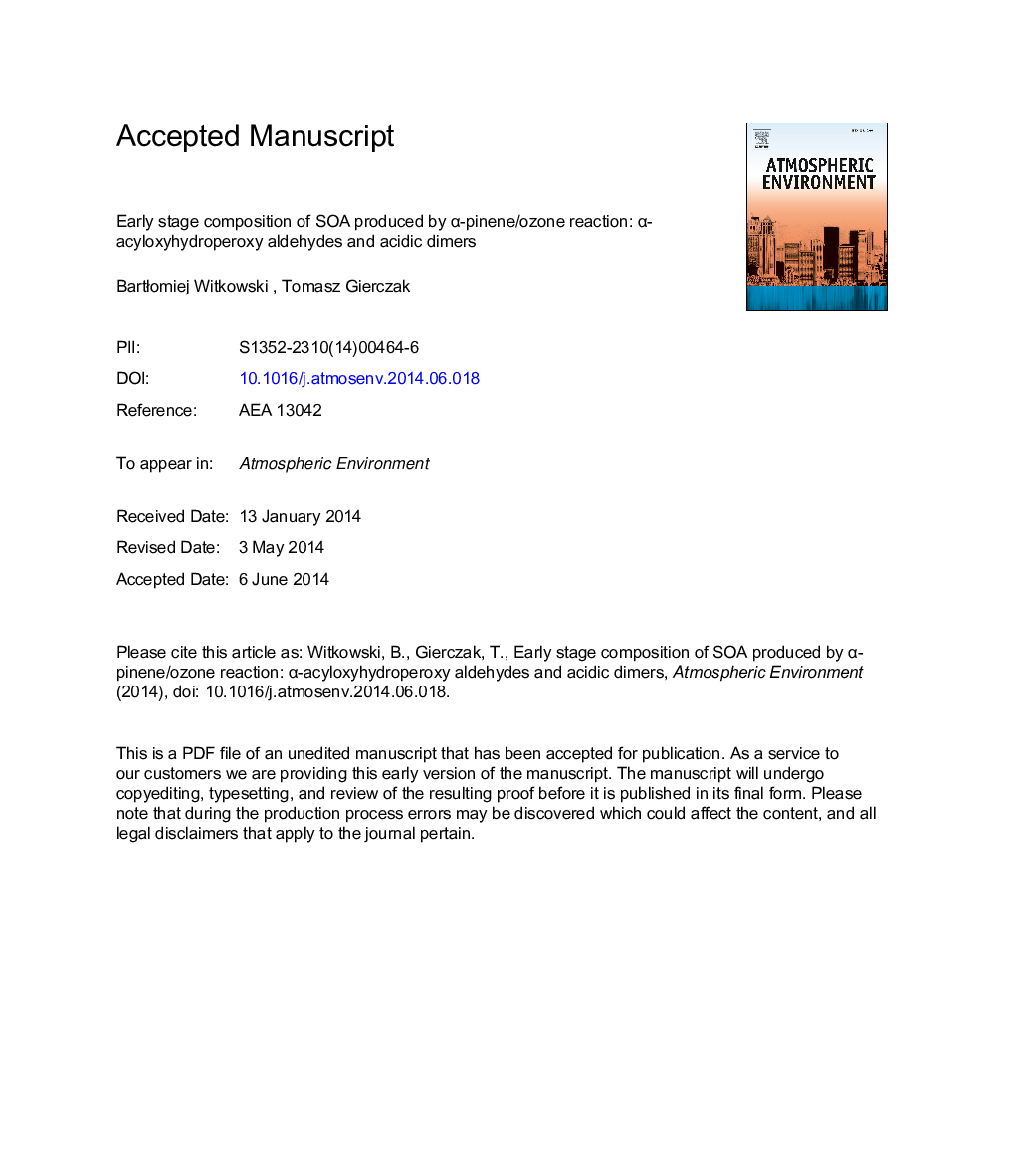| Article ID | Journal | Published Year | Pages | File Type |
|---|---|---|---|---|
| 6339152 | Atmospheric Environment | 2014 | 42 Pages |
Abstract
Composition of the freshly formed secondary organic aerosol (SOA) generated by ozonolysis of cyclohexene, cyclohexene-d10 (model precursors) and α-pinene was studied using liquid chromatography coupled to electrospray ionization tandem mass spectrometry (LC-ESI/MS2). SOA was generated in the flow-tube reactor under the following conditions: 22 ± 2 °C, 1 atm and reaction time was approx. 30 s. In an attempt to resolve the current ambiguities, regarding the structure of α-pinene SOA nucleating agents, analytical methods for analysis of α-acyloxyhydroperoxy aldehydes and oligomers containing carboxylic group were developed to study the potential nucleating agents. Negatively charged m/z 351, 341, 337, 357 and 367 ions corresponding to the acidic oligomers were detected in freshly formed α-pinene SOA. For the first time, structures and formation mechanism for compounds detected as m/z 337 and 351 ions were proposed. Based on the model precursor analysis (cyclohexene and cyclohexene-d10) it was concluded that these compounds were most likely formed via aldol reaction of the lower molecular weight aerosol components. α-Acyloxyhydroperoxy aldehydes were studied in the SOA samples using previously developed, novel method, based on the prediction of fragmentation spectrum for the compounds of interest. It was concluded that α-acyloxyhydroperoxy aldehydes were not formed in significant quantities. Based on the obtained results, possible SOA formation and growth mechanism is discussed.
Related Topics
Physical Sciences and Engineering
Earth and Planetary Sciences
Atmospheric Science
Authors
BartÅomiej Witkowski, Tomasz Gierczak,
